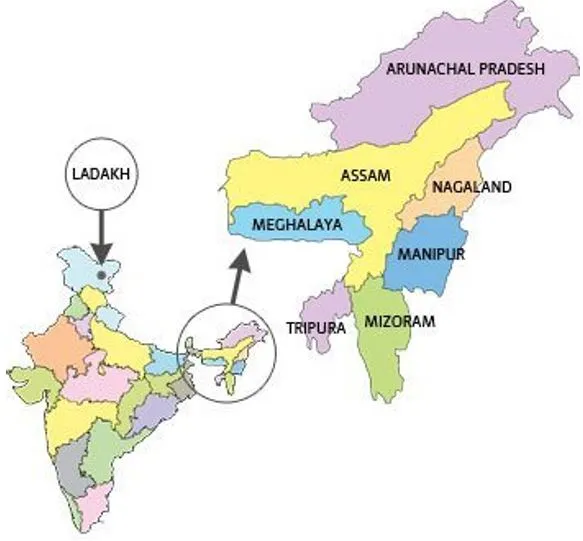

15th May 2025 (11 Topics)
Context
Recently, Muhammad Yunus proposed a comprehensive economic integration plan involving Bangladesh, Nepal, Bhutan, and India’s Seven Northeastern States (commonly called the ‘Seven Sisters’). His remarks have triggered strategic and policy interest in India because:
- He linked India’s internal geography (i.e., the landlocked nature of Northeast India) to foreign powers like China.
How India's existing structure counter the ‘closed’ perception of Northeast?
- India’s Northeast is Landlocked — But Connected: Yes, the Northeastern region of India is landlocked, surrounded by international borders on almost all sides: China, Bhutan, Myanmar, Bangladesh.
- But India has built and secured alternative access through the Chicken’s Neck (Siliguri Corridor) and India-Bangladesh agreements on transit and trade.
- Bangladesh’s Role as a Transit Partner: India already uses Bangladeshi ports like Chattogram and Mongla for transporting goods to its Northeast. India-Bangladesh Protocol Routes, like the Ashuganj-Akhaura corridor and waterways on the Brahmaputra-Barak system, allow movement of goods and even energy.
- Hydropower and Energy Integration: A Tripartite Power Agreement between India, Nepal, and Bangladesh allows Bangladesh to import 40 MW of electricity from Nepal via India’s grid. Bhutan is already a major hydropower partner of India. Regional pooling of energy could reduce costs and increase energy security.
Strategic Concerns for India
- Bangladesh: Yunus’s pitch in Beijing suggested Bangladesh could be the ‘guardian of the ocean’ for India’s Northeast and an economic bridge to China. This raises eyebrows in Indian policy circles because:
- It internationalizes India’s internal regions.
- It implies dependence on Bangladesh for maritime access — undermining India’s own connectivity efforts.
- It indirectly invites China into India’s strategic backyard, which is highly sensitive given border tensions and BRI’s spread.
- China’s Interest in Northeast via Bangladesh: China has shown interest in projects in Chittagong, Mongla, and the BCIM Corridor (Bangladesh-China-India-Myanmar). A framework that brings in India’s Northeast into Chinese-linked projects raises national security and sovereignty issues.
- India has been cautious of letting China access Silk Road-like routes through Northeast India due to potential military and surveillance threats.
Fact-Box:India’s Northeast
Key Policy Initiatives
|
More Articles


